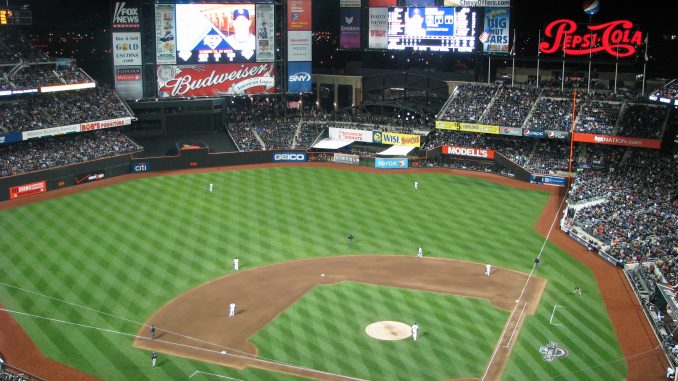
In the sports world, some critics have been expressing their displeasure with aspects of the game of baseball. Some argue that you cannot have a sport that does not have universal field dimensions. Some argue you cannot have a sport where the rules differ between leagues. Don’t get me wrong, it is a bit weird, however, it’s these unique quirks that separate the game of baseball from the rest and add to its rich tradition.
It’s the eve of game seven of the World Series and you’re having the guys over for some beer, chips, guac, wings: the whole nine yards. You and your friends start getting immersed, the guac starts flying, the beers start flowing and before you know it, like clockwork, all the guys are ready for a beer and a leak. While your friends are trying to figure out where the fridge and bathroom are, you’re already seated back on the couch with a cold beer.
Home field advantage in baseball is gained through knowledge of and familiarity with one’s home park.
Just take a look at our two local stadiums. Yankee Stadium dimensions (left, center, right) are 318, 408 and 314 feet while Citi Field’s are 335, 408 and 330 feet. Dimensions aside, Citi Field also presents many quirks like it’s non-uniform sharp-angled walls throughout the outfield. Yankee Stadiums outfield is more traditional in that the outfield walls are uniformly curved and have little to no angles.
Unlike Yankee Stadium, Citi Field’s angles and dimensions may present much more challenging bounces off the wall for outfielders who are not acquainted and can also provide a frustrating hitting environment for incoming teams.
There are also stadiums like the Oakland Coliseum, which has the most foul territory in Major League Baseball by far. In research on foul outs by stadium in 2012-13, 398 foul outs occurred in the Coliseum with Safeco Field coming in second at 270. Compare this to Yankee Stadium and Citi Field who together combined for only 424 foul outs. This effect is so drastic that baseball statisticians believe that hitting at the Coliseum takes five to 10 points off every batter’s average.
Baseball therefore, presents the true home field advantage. Unlike all other sports where the visiting team simply needs to overcome loud jeering, visiting MLB teams are at a true disadvantage being unfamiliar with the dimensions of the stadium and how it may impact specific plays or the game overall.
Another oddity that presents perennial debates among baseball executives is the designated hitter (DH) rule, or lack thereof in the National League.
After the American League (AL) owners voted 8-4 to approve the DH for a three-year trial, Yankee Ron Bloomberg became the first official DH in MLB history on April 6, 1973. Following an attendance boost in the AL, the National League (NL) held a meeting on August 13, 1980 where they were unable to reach an agreement to approve the DH in the NL and have not held another vote on the matter since.
Almost 40-years later nothing has changed. Opinions among fans and executives alike remain split. Supporters of the DH claim that nobody wants to see pitchers hit because they are automatic outs and therefore take away from the integrity of the game. Basically, hitters hit and pitchers pitch. Don’t tell this to Giants starter Madison Bumgarner.
Those who oppose the NL adopting the DH claim that it promotes strategy, that managers will now need to actually manage by keeping track of their bench and bullpen. Most importantly, it has become tradition.
As an overall fan of the game, I personally feel the rule should be left alone. There are pros and cons of each and fans of both remain extremely loyal. In a situation like this where it truly only matters a few games a year during interleague play, tradition should come first.
Whether it’s the lack of speed, action, the personalized ballparks or the intraleague rule differences, the average sports fan will always find something they dislike about the game. However, if you have the palate for it, you understand the true fun and beauty these unique differences and traditions present.
